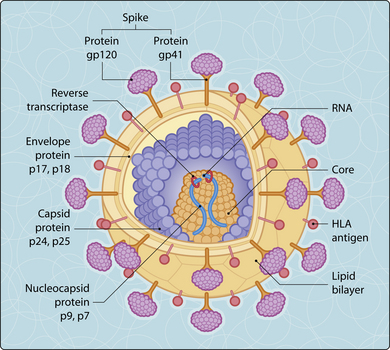29. Human immunodeficiency viruses and the acquired immunodeficiency syndrome
The viruses
There are two viruses, HIV-1 and HIV-2, which are accepted causes of AIDS. Structurally, these viruses are identical (Fig. 3.29.1). They are retroviruses, so-called because they encode an enzyme, reverse transcriptase, that makes a DNA copy of genomic RNA when it infects cells; this is ‘backwards’ (Greek retro) to the classic RNA from DNA. The replication cycle of HIV-1 is shown in Fig. 3.29.2. Other retroviruses that are known to infect humans are human T cell lymphotropic viruses (HTLV) 1 and 2, but they are associated with lymphoma and neurological disease not AIDS.














